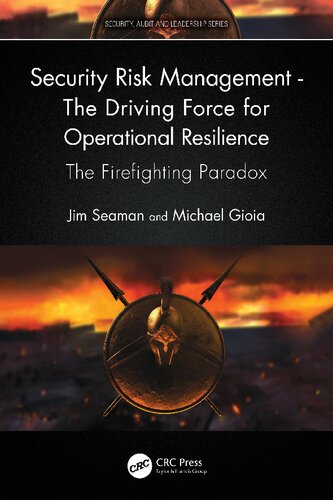

Most ebook files are in PDF format, so you can easily read them using various software such as Foxit Reader or directly on the Google Chrome browser.
Some ebook files are released by publishers in other formats such as .awz, .mobi, .epub, .fb2, etc. You may need to install specific software to read these formats on mobile/PC, such as Calibre.
Please read the tutorial at this link: https://ebookbell.com/faq
We offer FREE conversion to the popular formats you request; however, this may take some time. Therefore, right after payment, please email us, and we will try to provide the service as quickly as possible.
For some exceptional file formats or broken links (if any), please refrain from opening any disputes. Instead, email us first, and we will try to assist within a maximum of 6 hours.
EbookBell Team

5.0
80 reviewsThe importance of businesses being ‘operationally resilient’ is becoming increasingly important, and a driving force behind whether an organization can ensure that its valuable business operations can ‘bounce back’ from or manage to evade impactful occurrences is its security risk management capabilities.
In this book, we change the perspective on an organization’s operational resilience capabilities so that it shifts from being a reactive (tick box) approach to being proactive. The perspectives of every chapter in this book focus on risk profiles and how your business can reduce these profiles using effective mitigation measures.
The book is divided into two sections:
1. Security Risk Management (SRM).
All the components of security risk management contribute to your organization’s operational resilience capabilities, to help reduce your risks.
• Reduce the probability/ likelihood.
2. Survive to Operate.
If your SRM capabilities fail your organization, these are the components that are needed to allow you to quickly ‘bounce back.’
• Reduce the severity/ impact.
Rather than looking at this from an operational resilience compliance capabilities aspect, we have written these to be agnostic of any specific operational resilience framework (e.g., CERT RMM, ISO 22316, SP 800- 160 Vol. 2 Rev. 1, etc.), with the idea of looking at operational resilience through a risk management lens instead.
This book is not intended to replace these numerous operational resilience standards/ frameworks but, rather, has been designed to complement them by getting you to appreciate their value in helping to identify and mitigate your operational resilience risks.
Unlike the cybersecurity or information security domains, operational resilience looks at risks from a business-oriented view, so that anything that might disrupt your essential business operations are risk-assessed and appropriate countermeasures identified and applied. Consequently, this book is not limited to cyberattacks or the loss of sensitive data but, instead, looks at things from a holistic business-based perspective.